During Elizabeth Gould's brief career as an ornithological illustrator, she made a significant contribution to the natural history of birds, as Katherine Marshall discovers.
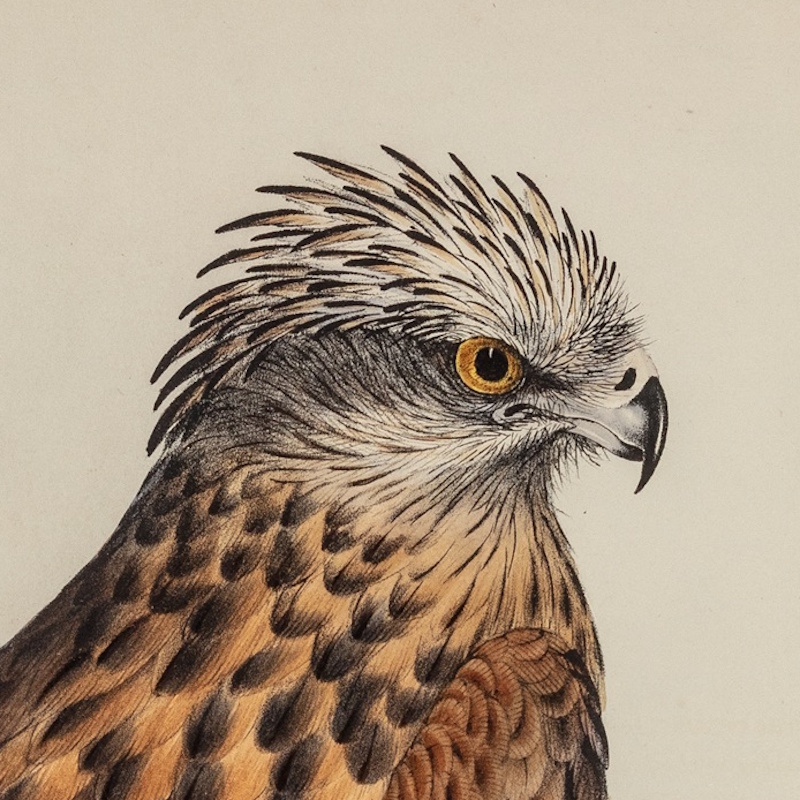
I’ve recently been cataloguing the first volume of Birds of Australia (1848), by John Gould FRS, for the Royal Society Picture Library. I was already aware that his wife Elizabeth was a scientific illustrator, contributing to his epic monographs of the birds of the world, but as I marvelled at the beautiful depictions of falcons from this volume of Australian birds of prey, I was curious to know more about her.
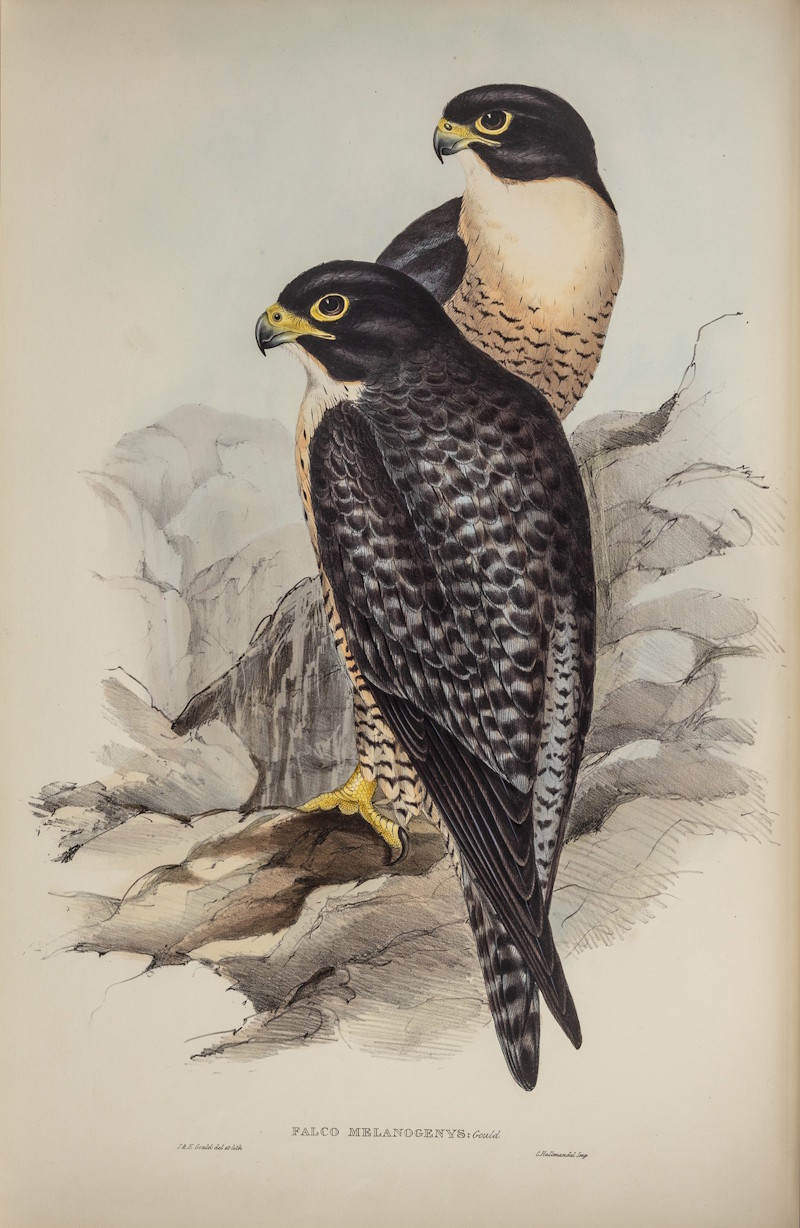 Black-cheeked falcon by John and Elizabeth Gould. Illustration from Birds of Australia by John Gould, vol.1 (1848) RS.21918
Black-cheeked falcon by John and Elizabeth Gould. Illustration from Birds of Australia by John Gould, vol.1 (1848) RS.21918
Elizabeth’s life was short: she died at the age of just 37 from a postpartum infection after the birth of her eighth child. Nonetheless, during her brief career as an ornithological illustrator, she produced over 650 lithographic plates, a significant contribution to the natural history of birds. As one of few women working in this field at the time, it is worth taking stock of her achievement.
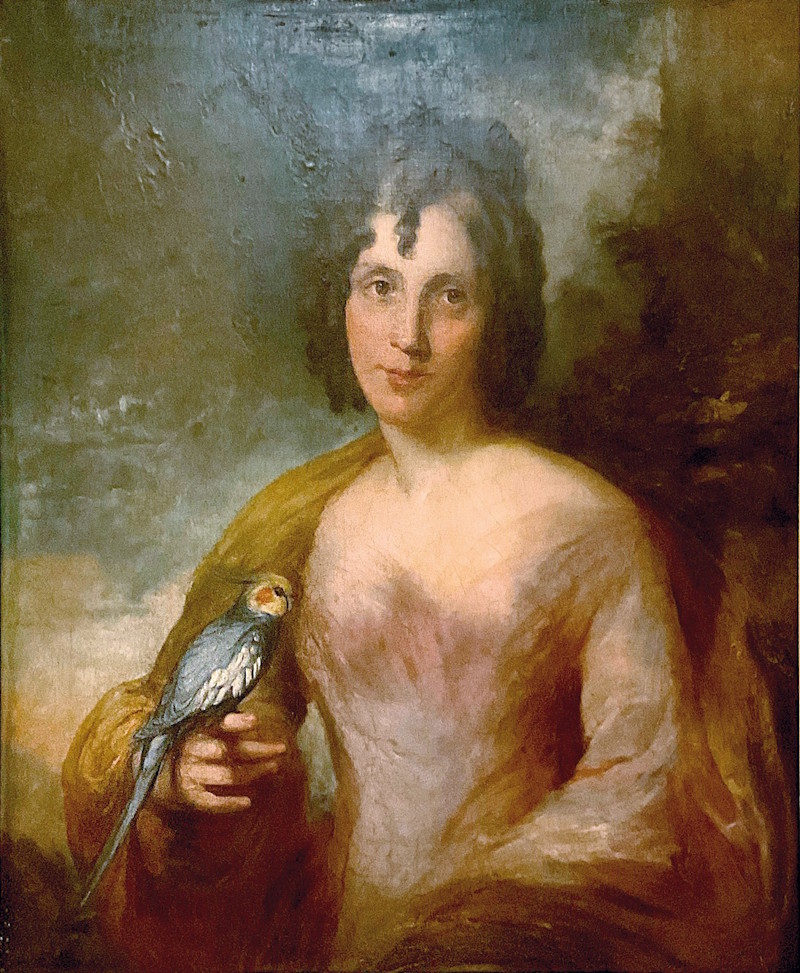 Portrait of Elizabeth Gould with an Australian cockatiel, painted after her death, ca.1841, artist unknown (public domain via Wikimedia Commons)
Portrait of Elizabeth Gould with an Australian cockatiel, painted after her death, ca.1841, artist unknown (public domain via Wikimedia Commons)
Elizabeth Coxen (1804-1841) married John Gould in 1829 when they were both 24; she was working as a governess and he was a taxidermist to the Zoological Society. It’s clear that their collaboration started almost immediately, since the first folio to A century of birds from the Himalaya mountains was published just two years later, and was furnished with lithographic plates produced by Elizabeth, already showing great skill in her craft. She worked from drawings and dead specimens for these early volumes, and this is somewhat evident in the stiff composition of the birds perched on branches, or the curled toes of this Indian flycatcher, for example:
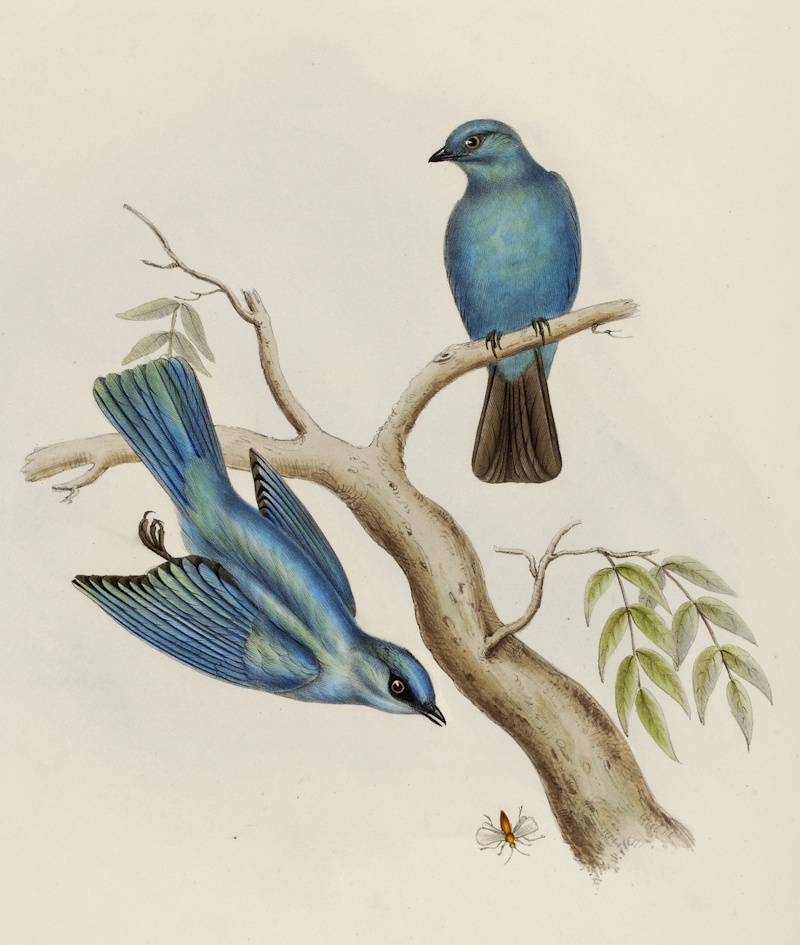 Indian flycatcher by Elizabeth Gould. Tab. VI in A century of birds from the Himalaya mountains by John Gould (1832) RS.21954
Indian flycatcher by Elizabeth Gould. Tab. VI in A century of birds from the Himalaya mountains by John Gould (1832) RS.21954
As John secured further support for his projects on the birds of Europe and later Australia, however, Elizabeth was able to accompany him on expeditions and observe the birds in their natural environment, allowing her to represent their character and setting more accurately through her compositions. The two-year trip to Australia began in 1838 and was supported by the Royal Society’s President, HRH the Duke of Sussex, who ensured their safe passage through this largely unexplored continent via the colonial network established at that time. Elizabeth joined the expedition along with their eldest son, but left three small children behind, causing her great anxiety. Despite this she realised the importance of the job in hand and got to work preparing drawings of indigenous plants in order to enrich the ornithological studies, while John collected specimens.
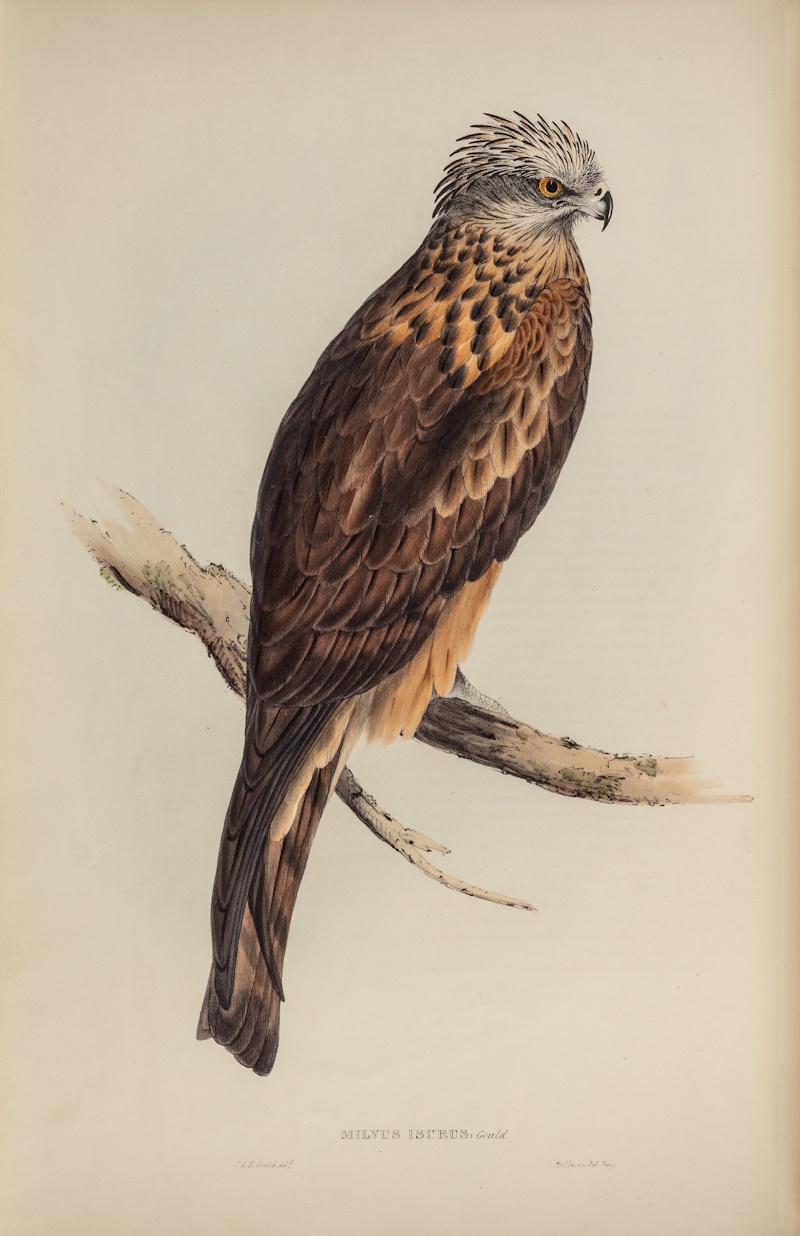 Square-tailed kite by John and Elizabeth Gould. Illustration from Birds of Australia by John Gould (1848), vol.1. RS.21932
Square-tailed kite by John and Elizabeth Gould. Illustration from Birds of Australia by John Gould (1848), vol.1. RS.21932
By the end of the trip they had generated an extraordinary body of work (as well as having another child along the way!). They launched the first instalment just four months after their return to England. Birds of Australia was published in seven volumes over eight years, and Elizabeth had produced 84 of the 681 lithographic plates before her untimely death. The remainder were entrusted to H C Richter, who worked from Elizabeth’s original watercolour studies. Gould paid tribute to his ‘amiable wife’ in the preface, acknowledging her contribution through the ‘immense mass of drawings, both ornithological and botanical […] made by her inimitable hand and pencil.’
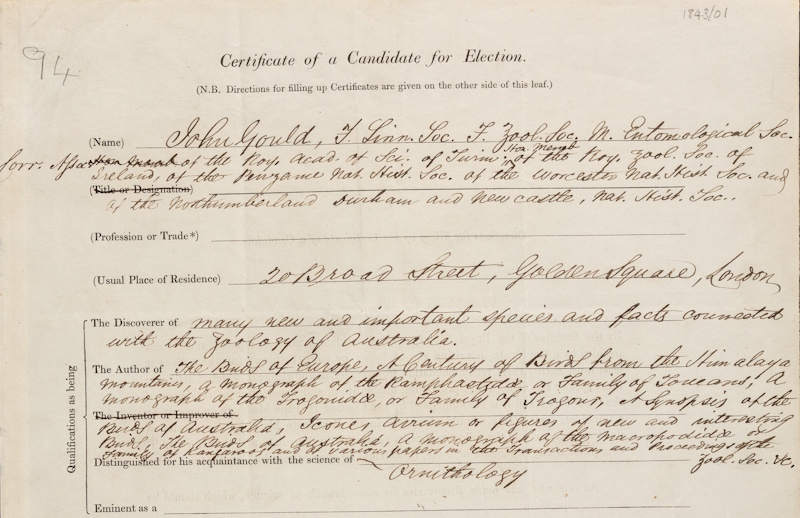 John Gould’s certificate of election to the Royal Society, 1843 (EC/1843/01)
John Gould’s certificate of election to the Royal Society, 1843 (EC/1843/01)
A year after her death, John was elected a Fellow of the Royal Society as ‘the Discoverer of many new and important species and facts connected with the zoology of Australia.’ As we’re celebrating the 80th anniversary of the first election of women Fellows, we’re looking back at the scientific work of women, and I think it’s important to recognise Elizabeth Gould’s contribution to zoological illustration, which supported her husband’s more recognised success as the ‘father of Australian ornithology.’
You can view further examples of her work on our Picture Library, or buy prints to furnish your walls with exotic birds by this now celebrated illustrator.

